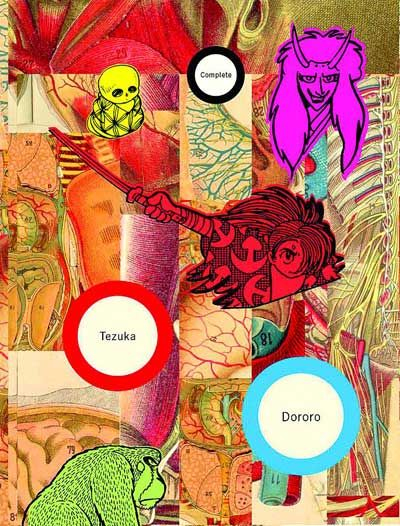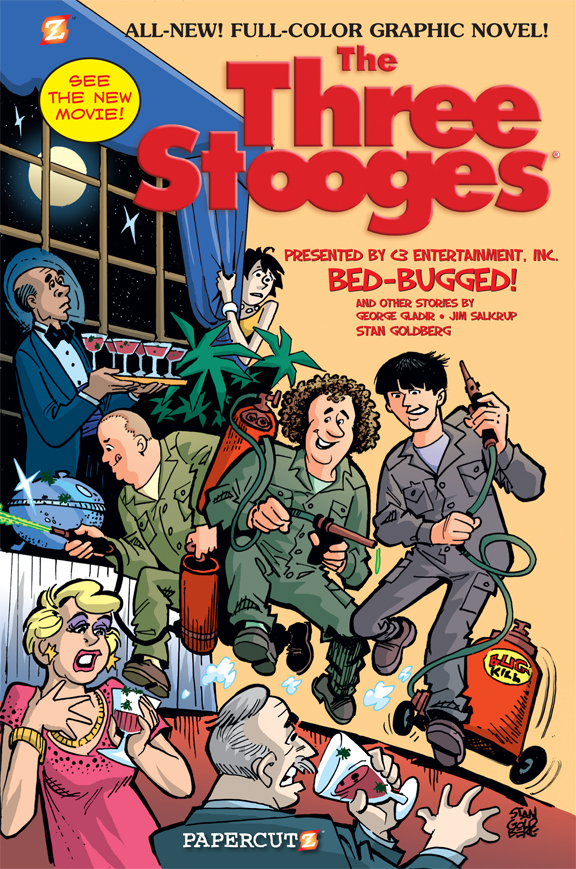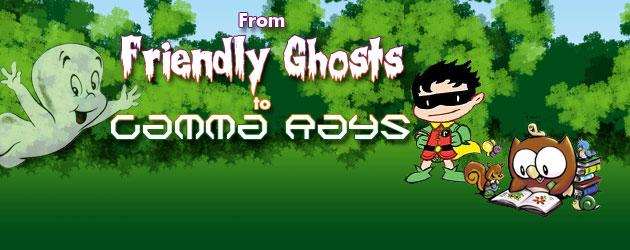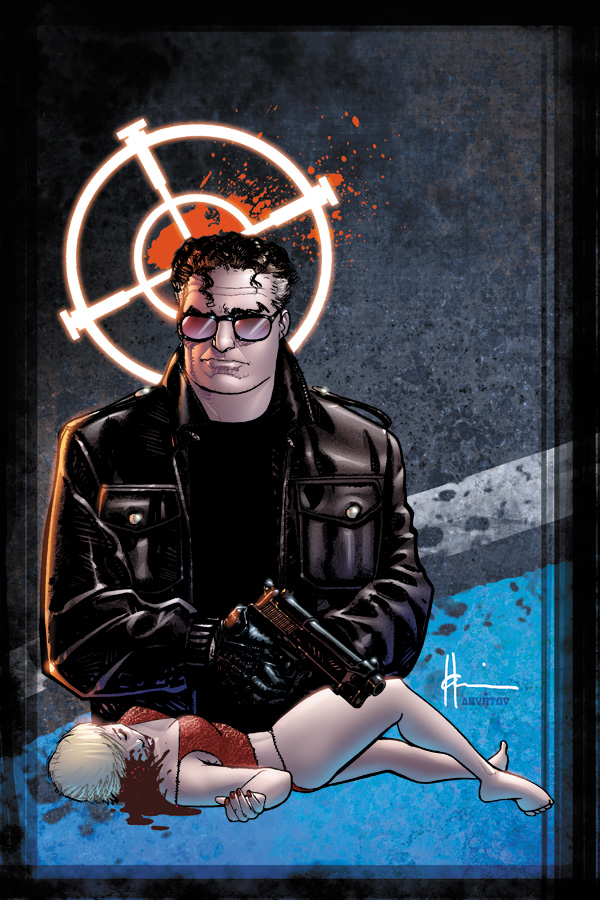From Friendly Ghosts To Gamma Rays, No.91: Everything Old Is New Again
Hey guys, and welcome back to your favorite all-ages comics column, From Friendly Ghosts To Gamma Rays! Before we get down to this week’s goodness, I just wanted to say that I love the new MAD Magazine App and digital version of their magazine. I think a lot of people having been chatting about Marvel’s AR-App this week, which hasn’t thrilled me yet (trying to take a picture of the panel in your printed book and juggling your iPad at the same time is such a pain, and if you don’t hit the panel right, forget about it!), but what has thrilled me is the MAD App DC rolled out this week. I reviewed it yesterday here on the site; check out the review here! Now let’s get down to it!
——————————————————–
 Dororo Omnibus Edition
Dororo Omnibus Edition
Publisher: Vertical Inc.
Written and Drawn By: Osamu Tezuka
Originally published from 1967 to 1968 in Weekly Shonen Sunday, Dororo finally made it over here in an Eisner winning three volume collection in 2008 published by Vertical Inc. Now, a few years later and for a fraction of the cost (this omnibus edition is just $24.95), we get all three volumes released in one set again to much coolness.
So what is it that makes Dororo stand out next to other works like Astro Boy or Princess Knight? Well, basically the plot and how it’s told by Tezuka is incredibly cool. The manga follows Hyakkimaru, a traveling swordsman who is out to slay 48 demons. Right before he was born, his Dad struck a deal with the demons where they could take 48 parts of his first-born in exchange for land and wealth. After Hyakkimaru was born, since he was nothing more than a human worm with no limbs, eyes, etc., they sent him in a basket down river so the gods could have their way. Luckily Hyakkimaru is saved by a fellow who takes pity on him, and after discovering Hyakkimaru is quickly developing a sort of psychic-intuition, builds him fake limbs and parts so he can function like a normal human. Hyakkimaru discovers that as he kills a demon, one of his 48 missing parts are returned to him, hence his journey. Early on he meets a child named Dororo (a kiddish mispronunciation of Doronbo, or “theif”), who claims he will not leave Hyakkimaru’s side until he is given his sword.
 In about 840 pages we get an epic journey as Hyakkimaru and Dororo meet a wide amount of demons, most based off Japanese folk-monsters, or yokai. This was the “thing” at the time, between the milestone manga GeGeGe No Kitaro (Tezuka references the author in Dororo) and the hit Yokai Monster War movies being produced by Daei, Tezuka tackling this type of work for a Shonen audience was a no brainer. However, that doesn’t mean anything bad at all; Tezuka is Tezuka at some of his best moments in this horror-action tale for all ages. From our heroes dealing with demon sharks to moth monsters, it’s fantastic work. At the same time, Tezuka has plot lines of Hyakkimaru dealing with his real long lost parents (and their success at his cost) a few times, as well as the sad story of why Dororo is an orphan, tying a human drama element into this yokai-fighting tale. Towards the end of the series he brings in a treasure subplot, which plays out until everything wraps up. Monsters, samurai, treasure: this thing has it all and it’s well-paced stuff.
In about 840 pages we get an epic journey as Hyakkimaru and Dororo meet a wide amount of demons, most based off Japanese folk-monsters, or yokai. This was the “thing” at the time, between the milestone manga GeGeGe No Kitaro (Tezuka references the author in Dororo) and the hit Yokai Monster War movies being produced by Daei, Tezuka tackling this type of work for a Shonen audience was a no brainer. However, that doesn’t mean anything bad at all; Tezuka is Tezuka at some of his best moments in this horror-action tale for all ages. From our heroes dealing with demon sharks to moth monsters, it’s fantastic work. At the same time, Tezuka has plot lines of Hyakkimaru dealing with his real long lost parents (and their success at his cost) a few times, as well as the sad story of why Dororo is an orphan, tying a human drama element into this yokai-fighting tale. Towards the end of the series he brings in a treasure subplot, which plays out until everything wraps up. Monsters, samurai, treasure: this thing has it all and it’s well-paced stuff.
Art wise, some folks like to hold off on Tezuka stuff, the obvious influence of Disney showing through his work. For those folks I say don’t hold back. Some of his adult works like Phoenix or Ode to Kirohito are done in that Tezuka style, but are still completely engrossing pieces of work for as “cartoony” as the character designs may be, and the same rings true here. Now, it’s an epic about killing demons, so yes, there’s blood and fighting; however, like the early cartoons of America before censorship struck, the blood and fighting seem harmless at times because of the character designs looking the way they do. That doesn’t mean they don’t have an impact, especially the way Tezuka edits a lot of his pages with near movie-TV story boarding, but for folks worried if this is still all-age appropriate, I say yes. It was in the late-60s and it is now.
Dororo would go on to have much success, spawning an anime series a year after its run completed in 1969 (which you can find online through fan-subs and such), a video game retitled Blood Will Tell, and a live-action movie a few years back also titled Dororo (which is pretty accessible since it was officially brought here; it’s up on Netflix streaming right now).
Dororo Omnibus Edition is out now, check it out!
——————————————————–
 The Three Stooges Vol.1: Bed-Bugged!
The Three Stooges Vol.1: Bed-Bugged!
Publisher: Papercutz
Writers: George Gladir and Jim Salicrup
Art: Stan Goldberg
Colorist: Laurie E. Smith
Just in time for the movie coming out this month, Papercutz has begun to reintroduce us to The Three Stooges in the world of comics with a slew of brand new materials. It’s been quite a number of years since the Stooges have been in the comics, but all this time later they have returned to make us laugh and smile thanks to a stellar team putting them together on the page.
The first volume of these all-new stories features Larry, Moe, and Curly on a variety of fun adventures. The first tale is “Sumo, My Best Friends Are Sumo!”, in which the Stooges enroll in a Sumo school to become Sumo Wrestling champions. Next is “The 3 Buckaroos,” in which after being bored with being just PAs on set, they dress up and try to become the stars of the film themselves to much hilarity. In “A Haunting We Will Go,” our madcap trio gets a haunted house which they try to capitalize on to make some quick cash. Finally, we get the title story, “Bed-Bugged!”, in which the Three Stooges work as bug exterminators to some bad results. We also get two two-page funnies, “Shrinkage” and “The Lost Survivors!”
To sum it up, this new collection is pretty fun. The writing on both the long-form and two-page stories all feels like The Three Stooges material for fans of their work. In many cases you can hear their voices actually speaking in your head, a tough thing to do sometimes with long established characters, but the team behind this title succeeds at that. All the stories are great, “Sumo, My Best Friends Are Sumo!” sticking out the most, with all the slap stick we’d expect (and hey, we even get a much enjoyed fart joke in there).
The art is a mixed bag. The cartoon world that Goldberg draws up for us is fantastic, and certainly his years of work at places like Archie pay off in these pages. Where it gets off track is the coloring by Smith, which leaves much to be desired. Her modern mix of colors and fading techniques clash frequently with the classic cartoon feel of Goldberg’s pencils, working in some places but feeling like a bad re-coloring job in other spots. In many panels she’ll use a shading technique on the Stooges’ faces to give more, when actually in a case like this, less would be better. Just give us flat, solid, classic comic book colors for this kind of work.
Aside from the issue with the colors, which hopefully will change in future volumes, the art and writing provide a solid package to enjoy, which is what is most important. New fans and old fans of the Stooges will want to check out this book for much needed laughs.
————————————————————
That’s it for this week! See you next, and until then get your kaiju-game on!

Drew McCabe
drew@comicattack.net




Pingback: Comics A.M. | Arizona legislature pulls back electronic censorship bill | Robot 6 @ Comic Book Resources – Covering Comic Book News and Entertainment